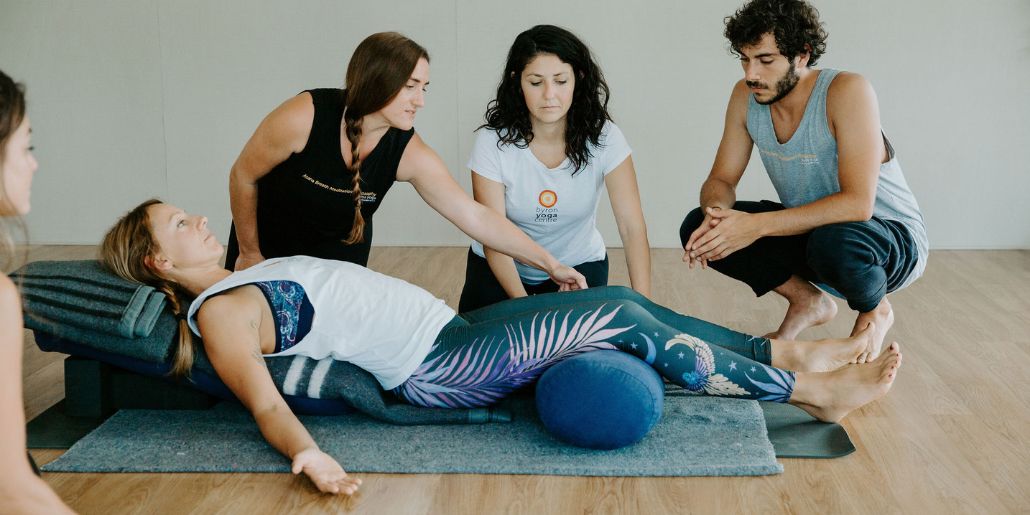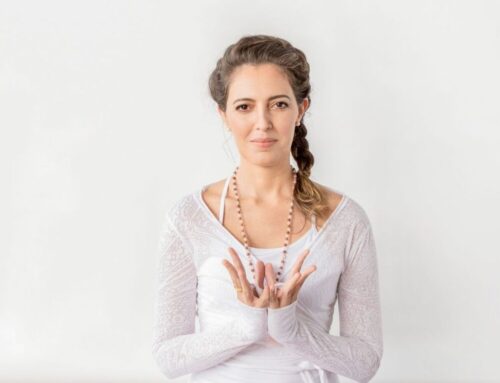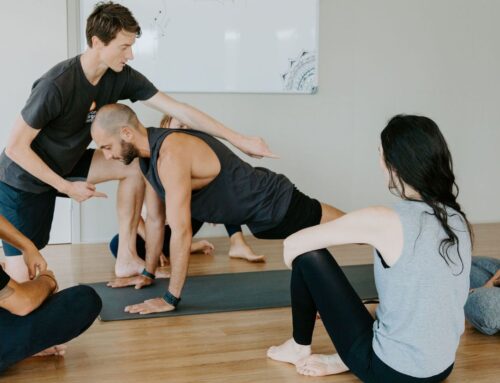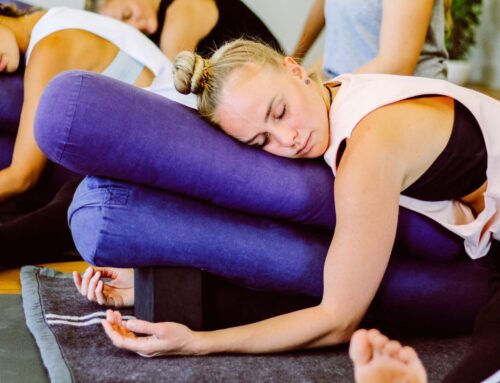Restorative Yoga and Yin Yoga are often confused. At a glance, they may appear similar—both involve long-held, passive poses and are grounded in stillness. But beneath the surface, they differ significantly in their origin, intention, and physiological impact.
As our modern lives become increasingly busy, more yoga practitioners and teachers are turning to these quieter practices to counterbalance the ‘yang’ nature of daily life. At Byron Yoga Centre, we offer specialty trainings in both Restorative Yoga and Yin Yoga to help students and teachers explore the depth and distinction between the two.
Whether you’re a student looking to deepen your personal practice or a teacher wanting to broaden your teaching skillset, understanding the difference between these two “yin-style” modalities is essential.
Watch our video comparing a classic forward bend—paschimottanasana—practised in both Yin and Restorative styles. You might be surprised which one resonates with you.
Origin & Lineage
Restorative Yoga traces its roots back to the teachings of B.K.S. Iyengar, who pioneered the use of props to make yoga accessible for people with injuries, illness or limited mobility. His student Judith Lasater later developed these ideas into the restorative practice we know today, popularising the idea of using fully supported postures to bring the nervous system into a state of deep rest and healing.
Yin Yoga, meanwhile, is a more modern interpretation of ancient practices. Inspired by the Daoist traditions of China and the concept of balancing yin and yang, Paul Grilley introduced Yin Yoga in the 1970s. While holding stretches for extended periods has existed for centuries in Daoist yoga, Grilley’s approach married these ideas with a deeper understanding of anatomy and Traditional Chinese Medicine.
Intention & Execution
Restorative Yoga is about doing less. In fact, it’s about not doing at all. Poses are completely supported with bolsters, blankets and other props so that the body can surrender entirely without effort or muscular engagement. The aim? To soothe the nervous system, shift the body into the parasympathetic state (rest and digest), and allow deep healing.
Think of it as “active stillness.” The practice helps regulate stress hormones, supports immunity, digestion and sleep, and is often used therapeutically to support those with anxiety, chronic fatigue, or post-surgery recovery.
Yin Yoga, by contrast, involves placing gentle but deliberate stress on the joints and connective tissues. Poses are held for 3–5 minutes (sometimes longer), with minimal muscular effort. This encourages hydration of the fascia, increases joint mobility, and helps free up energetic blockages in the body (chi/prana), aligning with the meridian system of Chinese Medicine.
It’s not always easy. And it’s not necessarily for everyone.
Key Differences at a Glance
| Restorative Yoga | Yin Yoga | |
|---|---|---|
| Origin | B.K.S. Iyengar & Judith Lasater | Daoist yoga roots, modernised by Paul Grilley |
| Main Intention | Deep rest and nervous system healing | Gentle stress to joints/fascia to release tension |
| Use of Props | Extensive props to fully support the body | Moderate propping to support an appropriate depth of sensation |
| Sensation | Minimal; should feel safe and comfortable | Moderate but healthy |
| Accessibility | Safe and beneficial for almost everyone | Caution for those pregnant, injured or hypermobile |
| Focus | Parasympathetic nervous system, healing | Fascia, meridians, energetic flow |
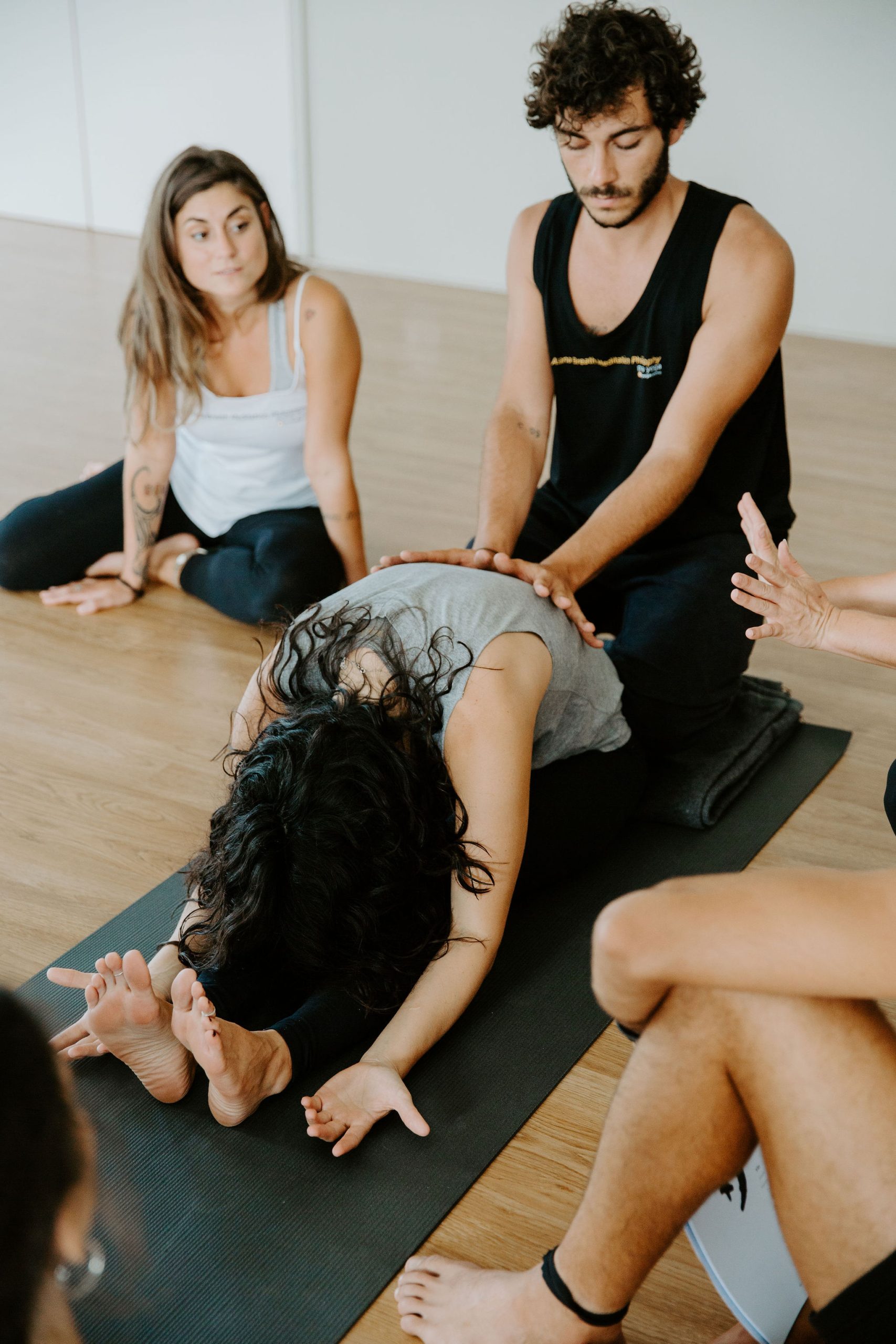
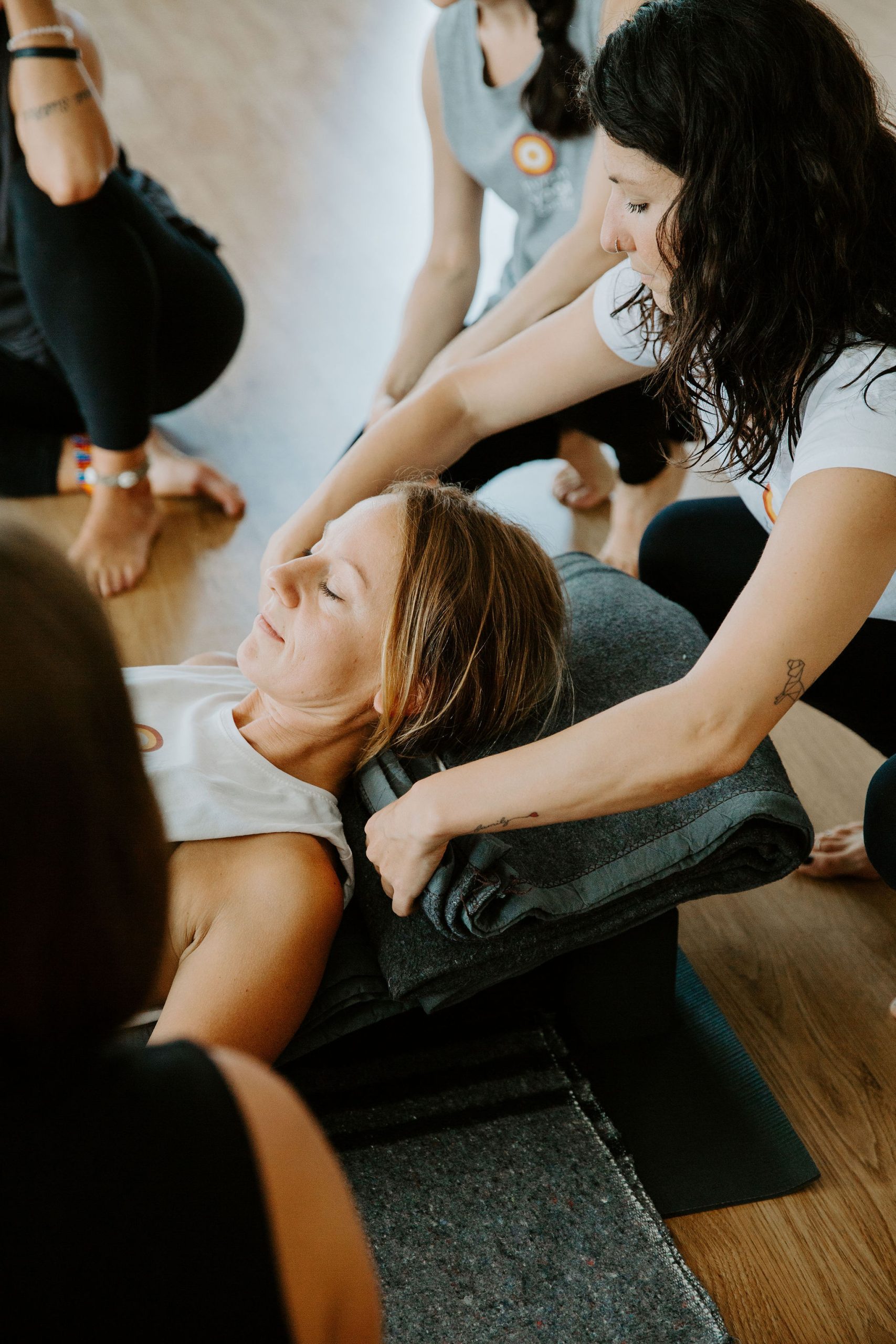
Why Practice Both?
As a yoga teacher, much like a professional dancer, being versatile is key. In today’s diverse wellness landscape, teaching only one style of yoga may limit your ability to serve students with different needs. Many teachers find themselves moving fluidly from a strong Vinyasa class into a soft Restorative one within the same evening. And students, too, are discovering the benefit of balancing the more fiery, active practices with slow, introspective ones.
In this high-speed, overstimulated world, yin-style practices have become more important than ever. They offer an antidote to “busy-ness disease,” allowing us to step off the treadmill of life and return to a more grounded, spacious state of being.
Which Practice is Right for You?
If you’re recovering from illness or injury, feeling overwhelmed, or just in need of deep rest—Restorative Yoga is your medicine. If you’re looking to increase joint mobility, hydrate your fascia, and work with emotional or energetic stagnation—Yin Yoga might be the better fit.
Ultimately, both practices can help bring us back to balance—but the path they take is different.
Want to Learn More?
At Byron Yoga Centre, we offer specialised trainings in both Yin Yoga and Restorative Yoga, designed for yoga teachers and committed students alike. Whether you’re looking to deepen your personal practice or expand your teaching toolkit, these trainings will help you understand the nuances, benefits and applications of each style.
In a world that often glorifies doing, both Yin Yoga and Restorative Yoga invite us to be. Each offers a unique way to slow down, tune in, and nurture ourselves from the inside out.
And in that quiet space of stillness? That’s where the real yoga begins.
